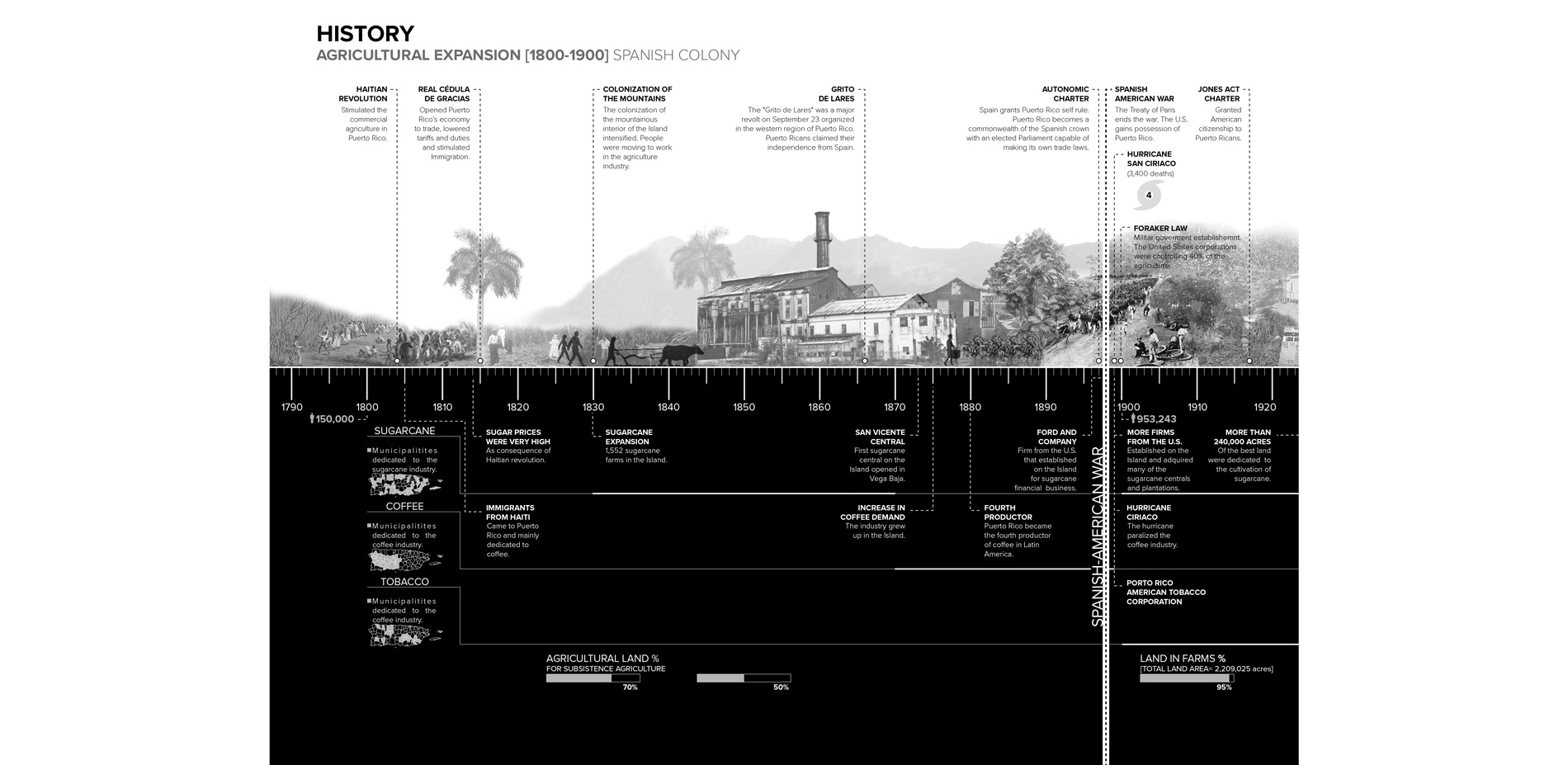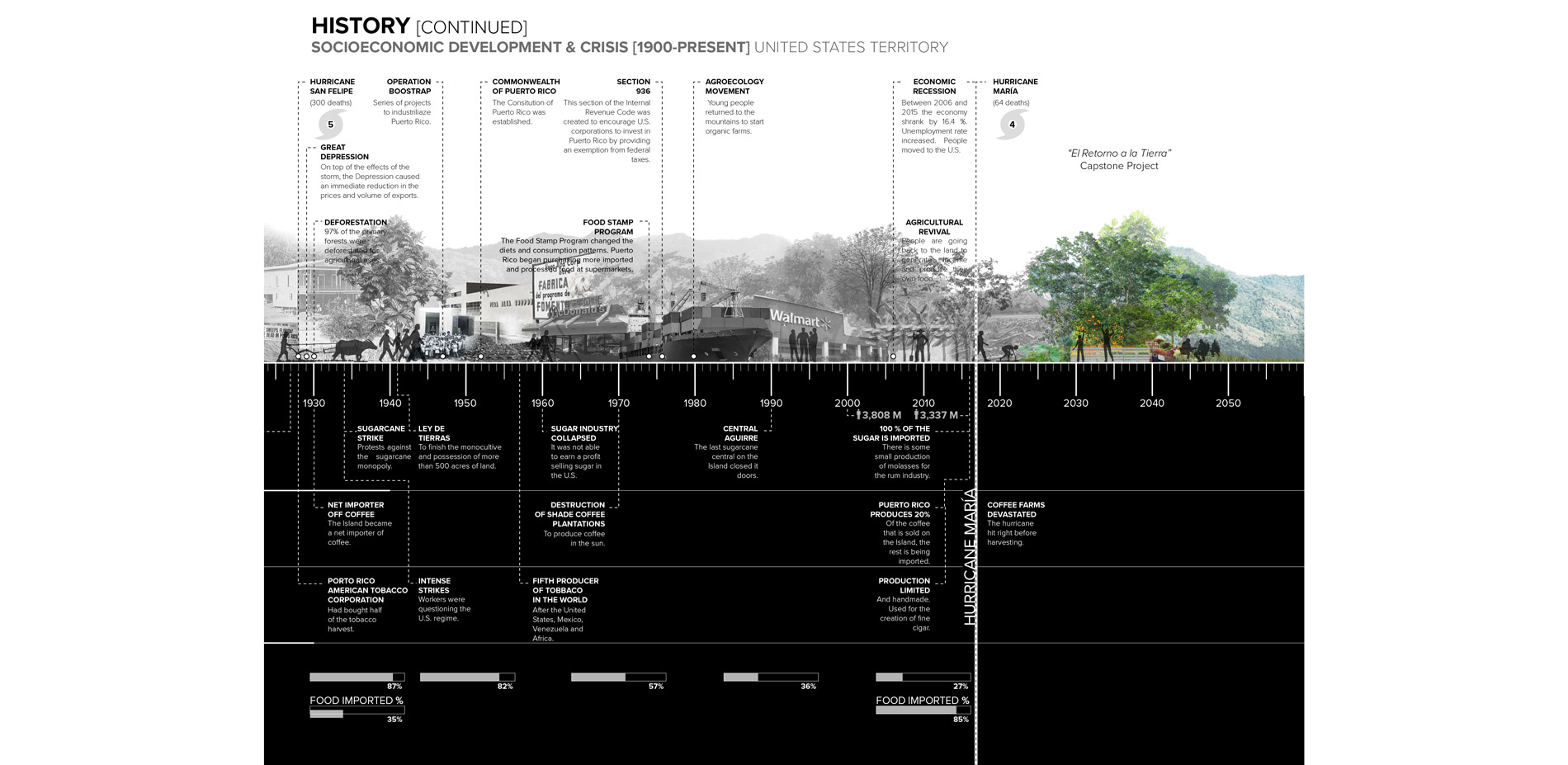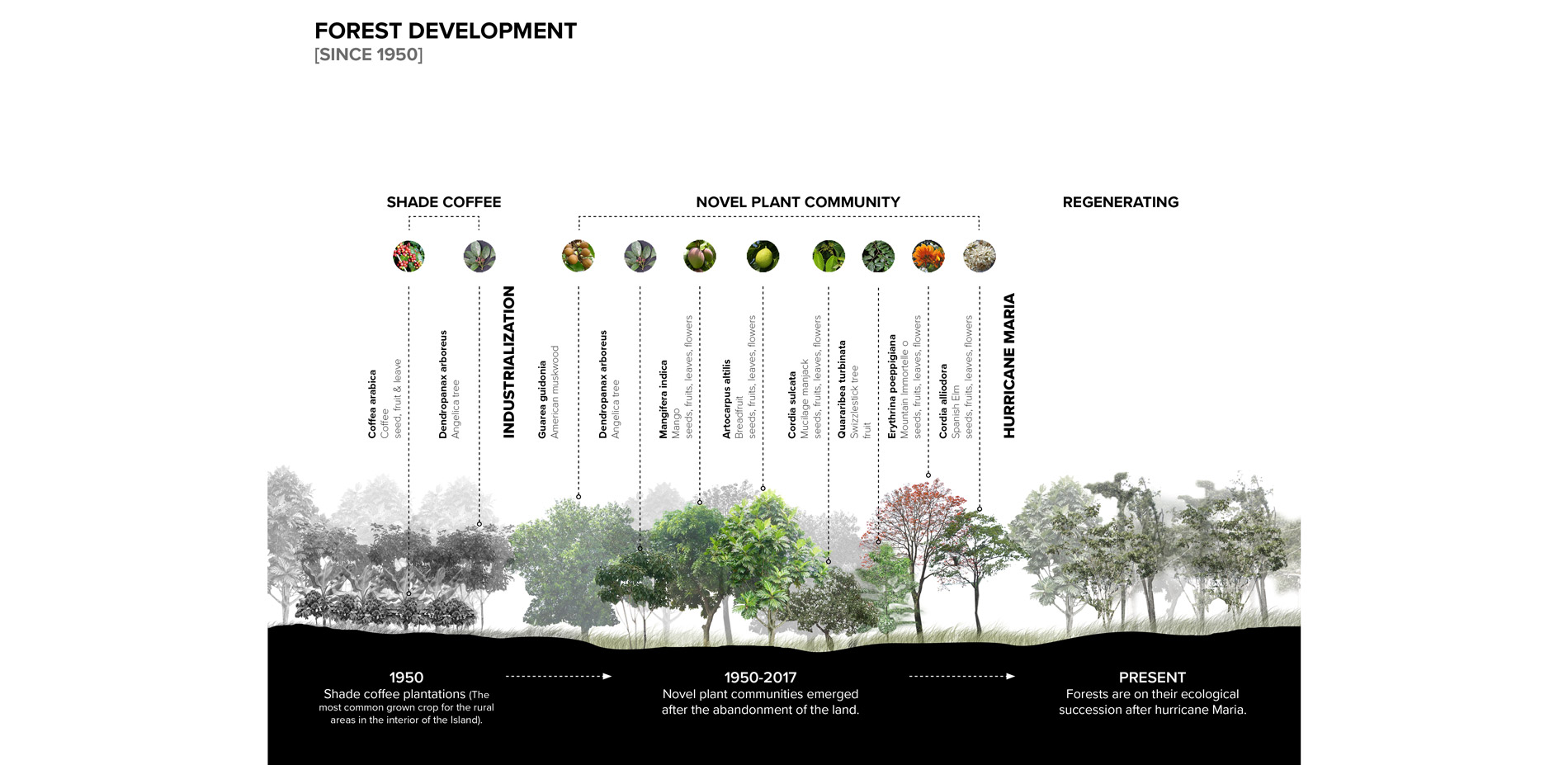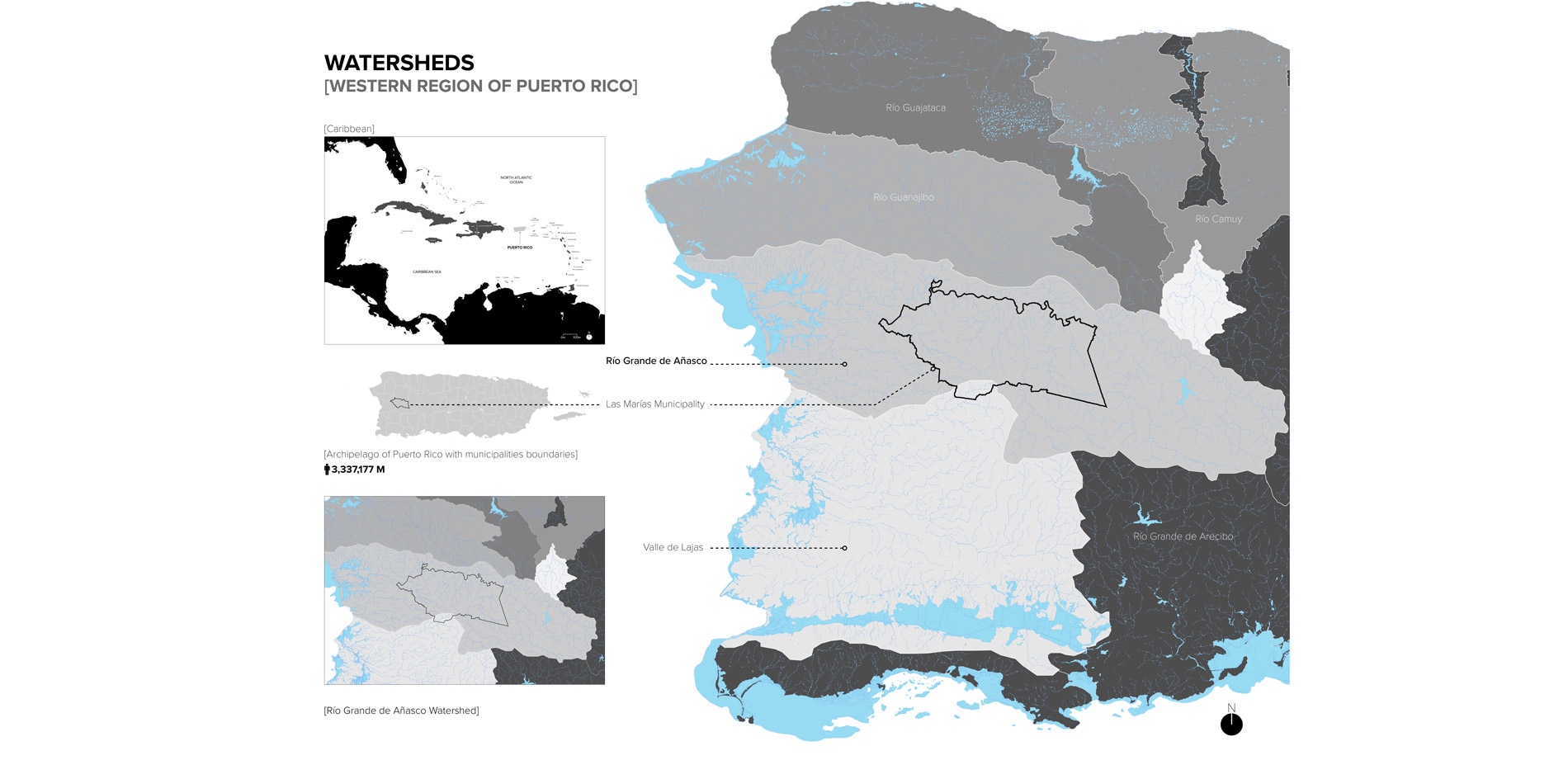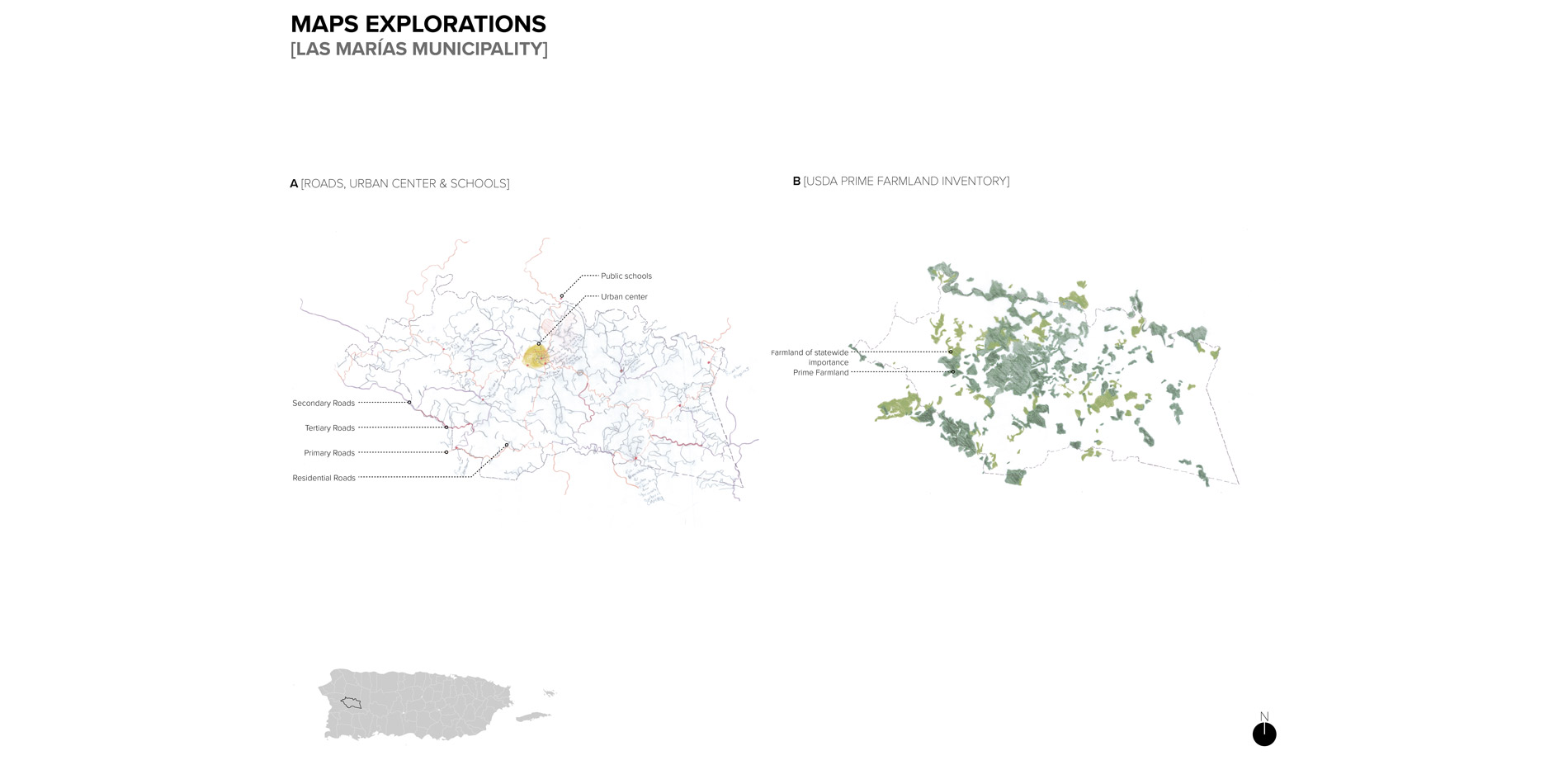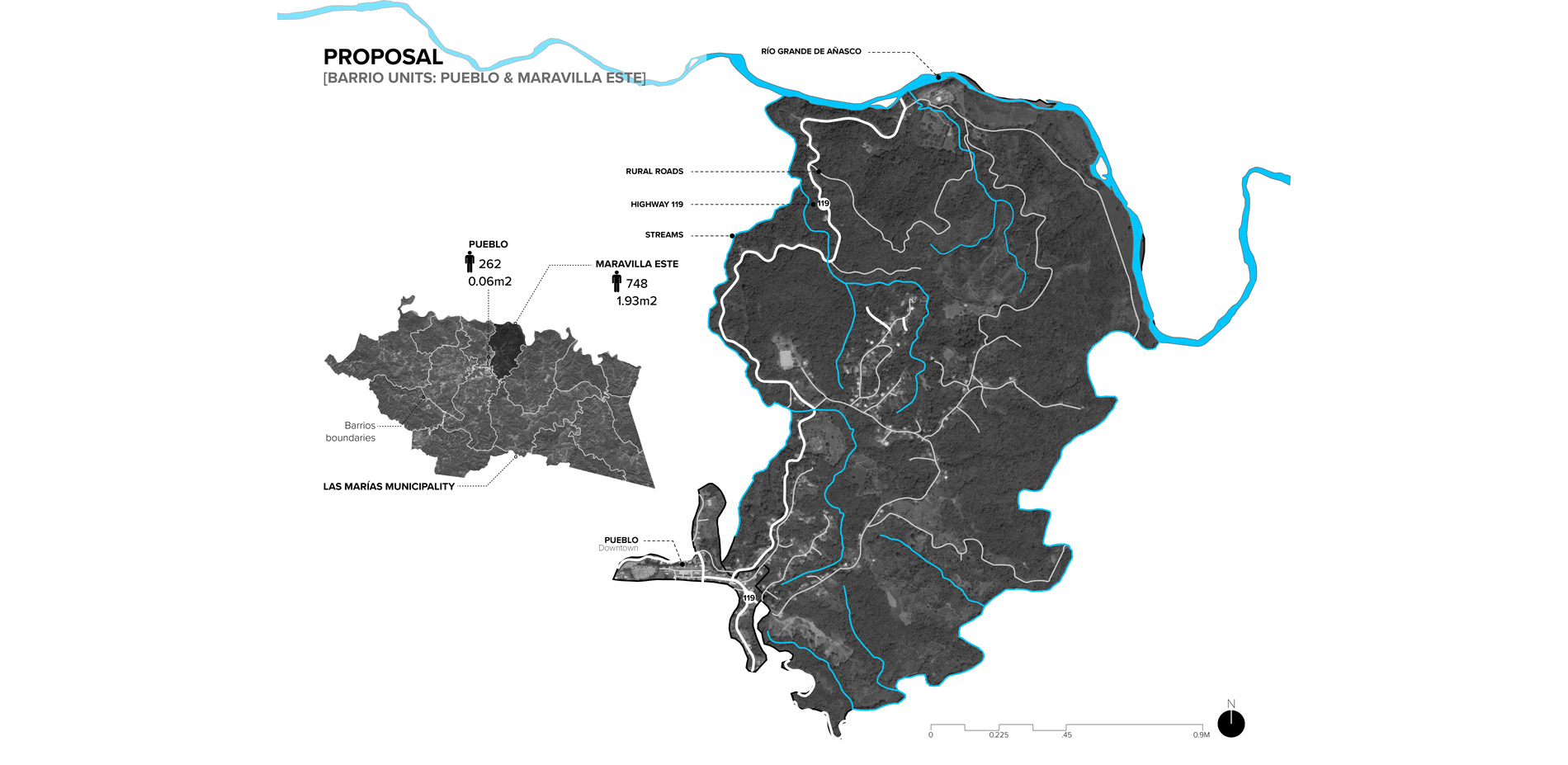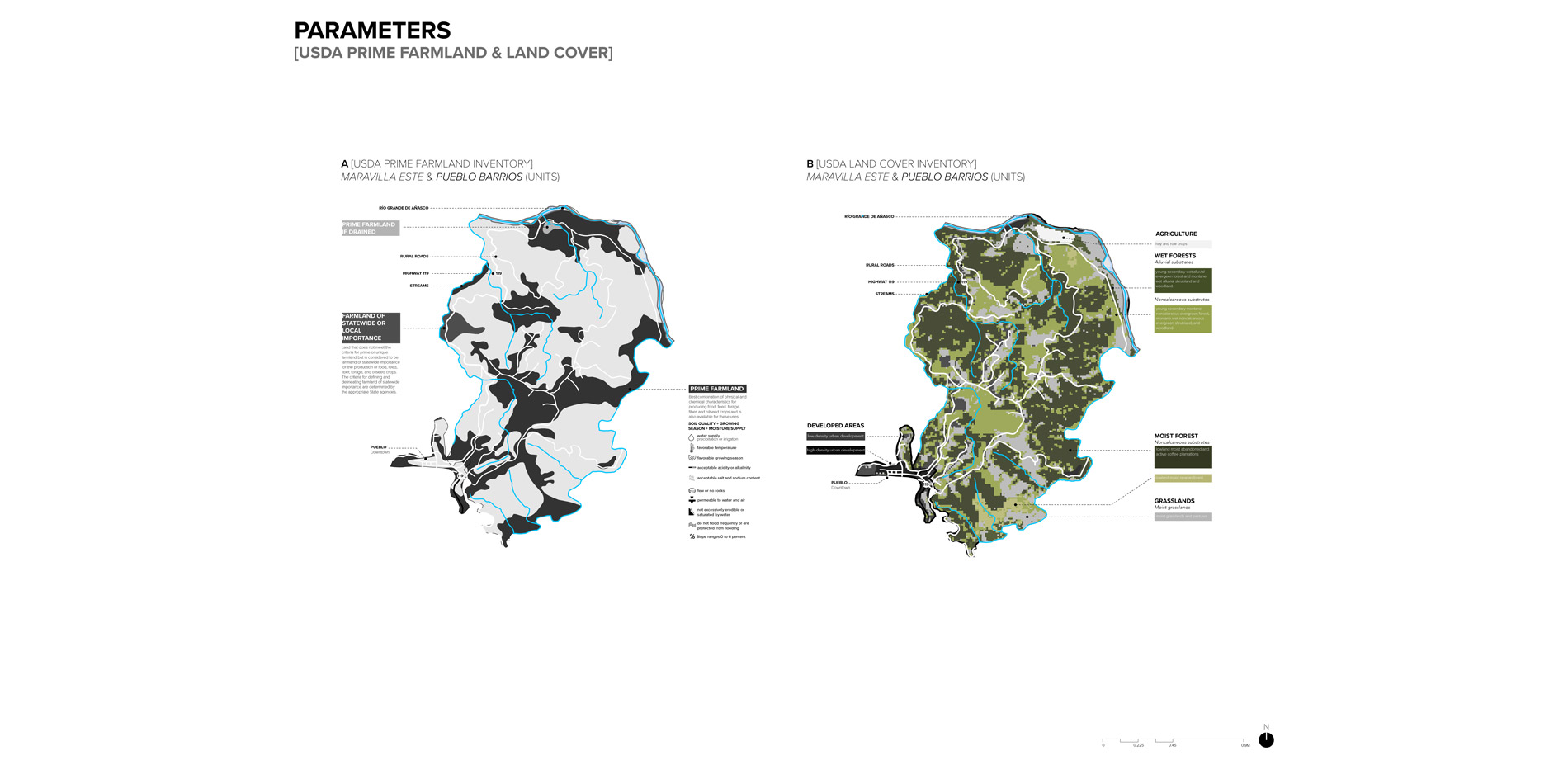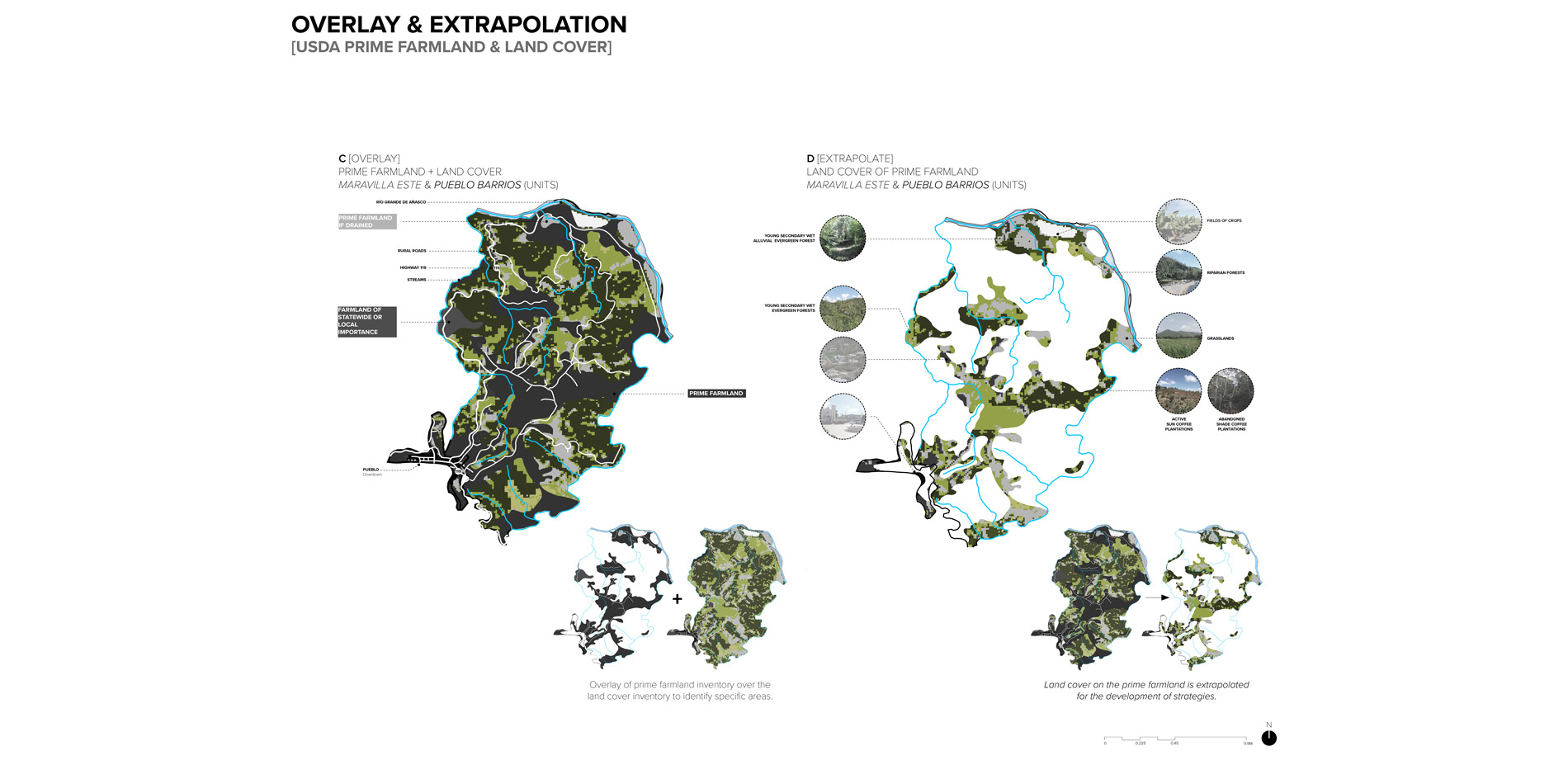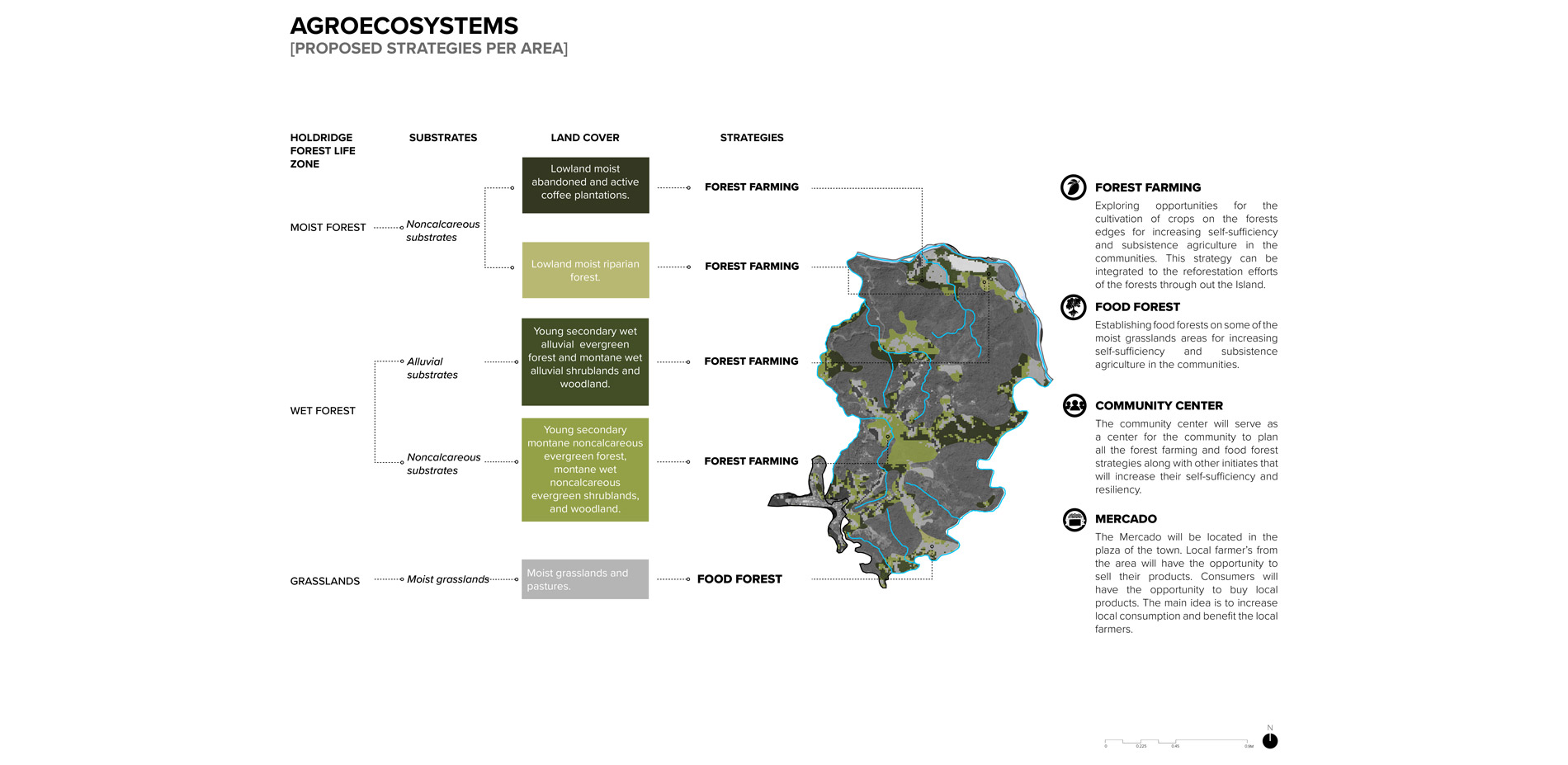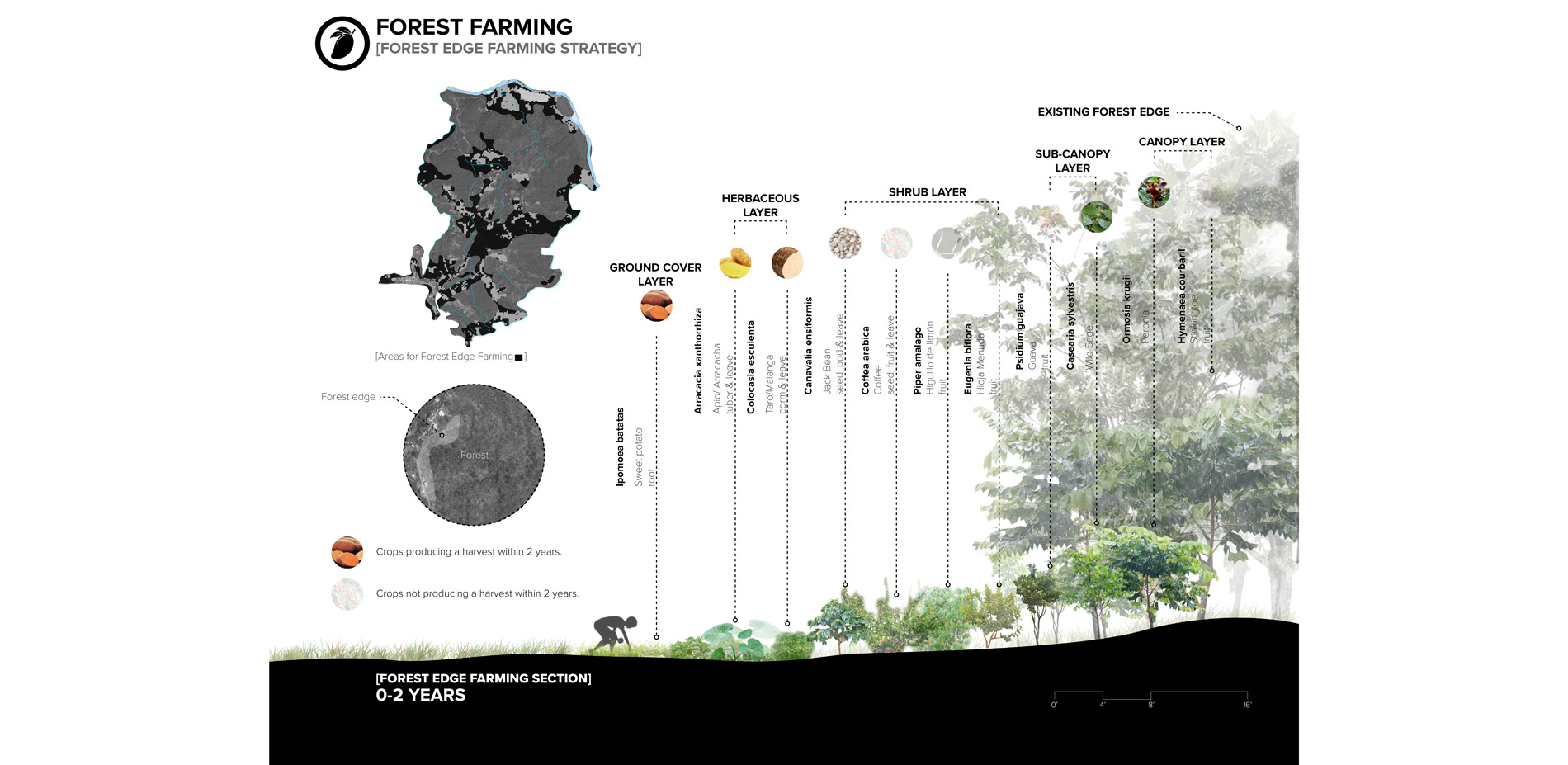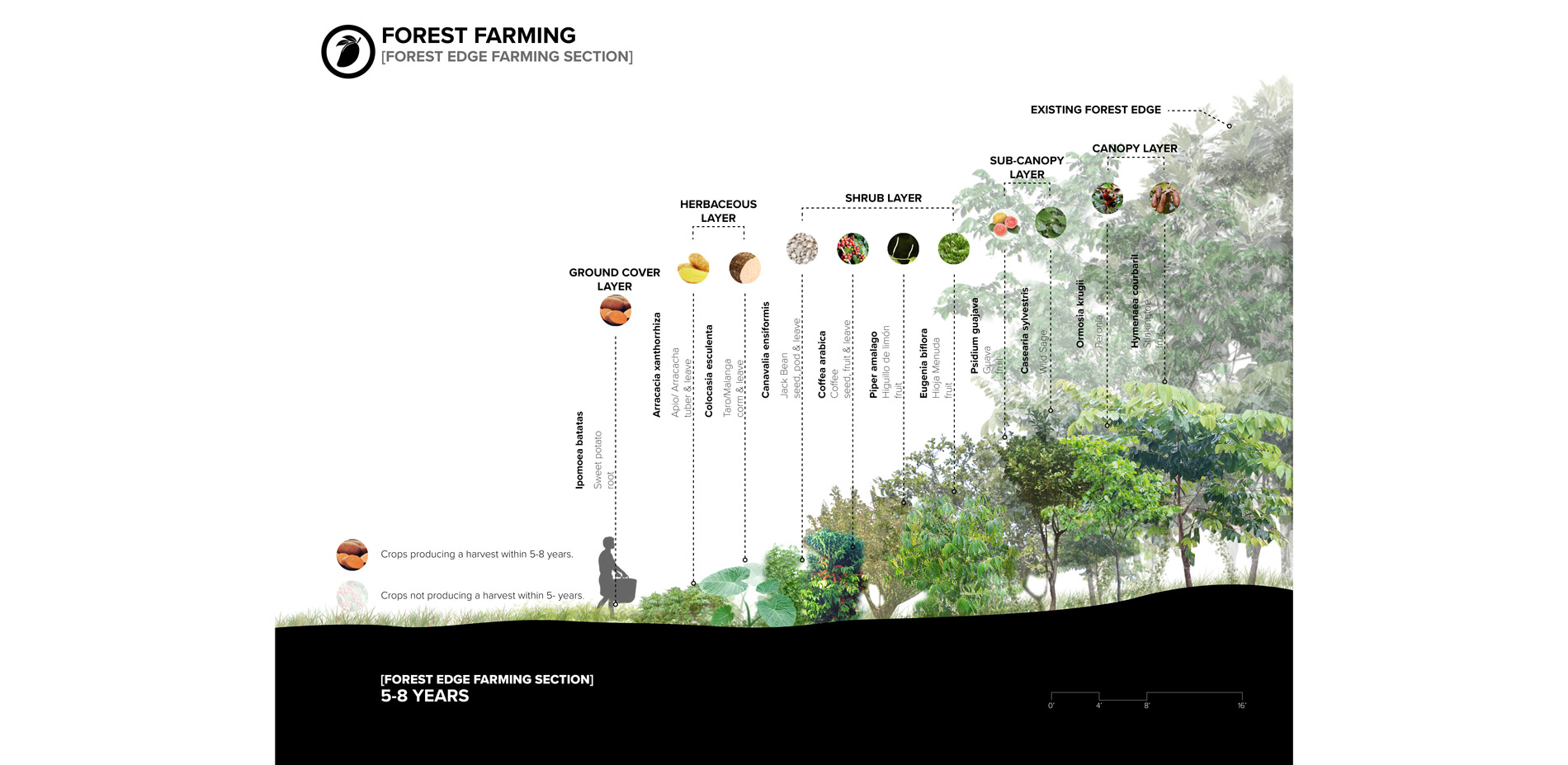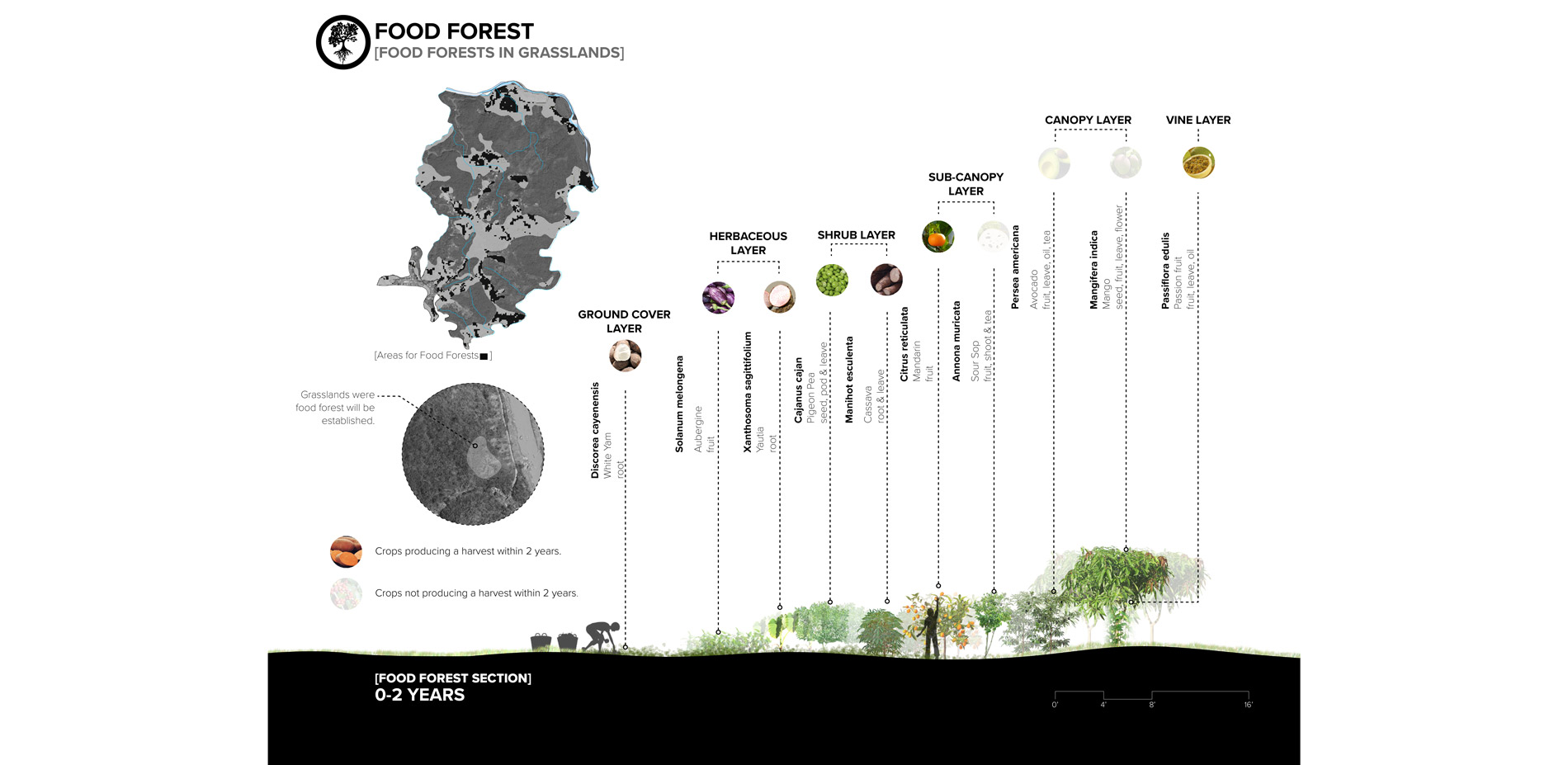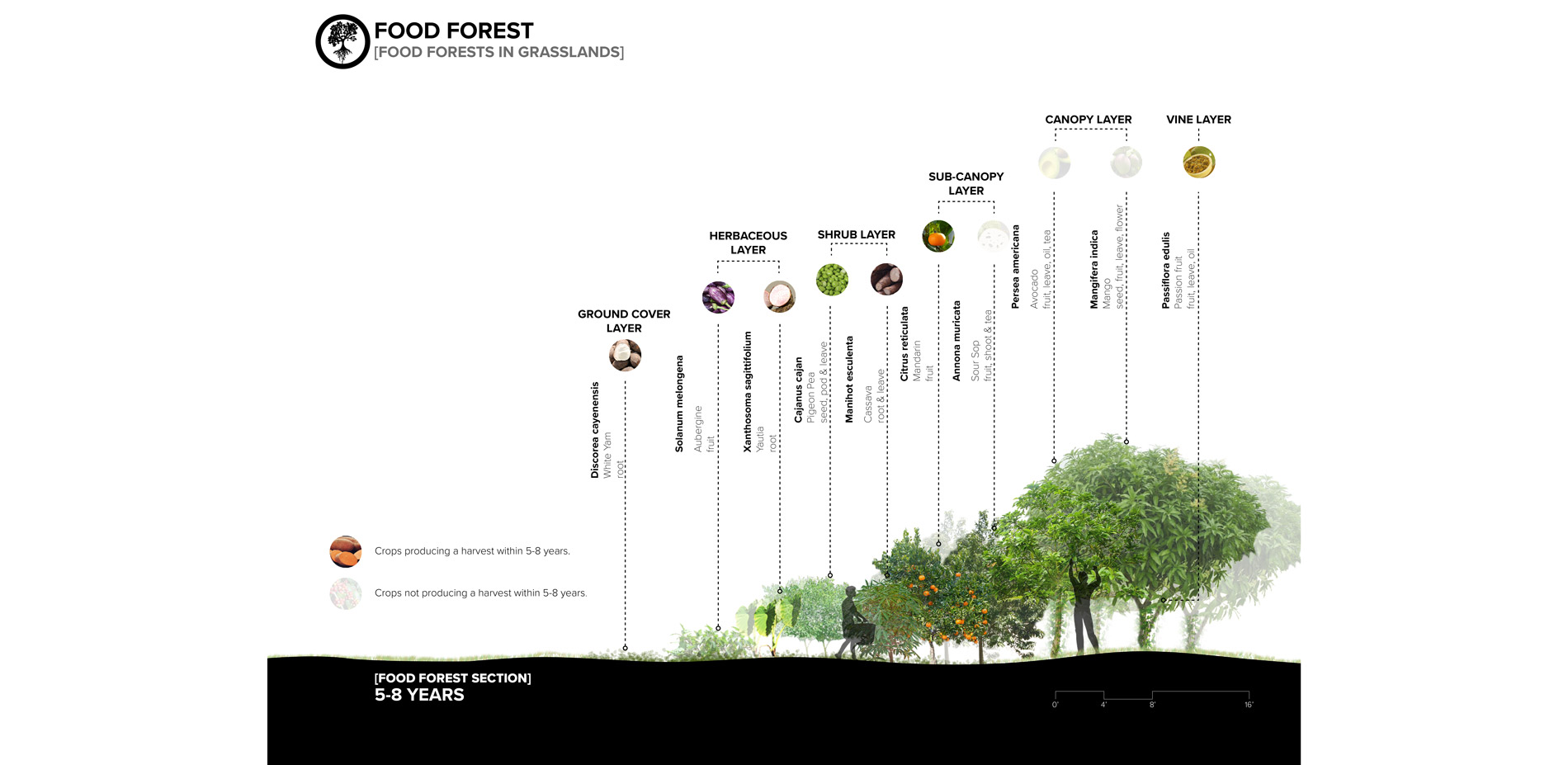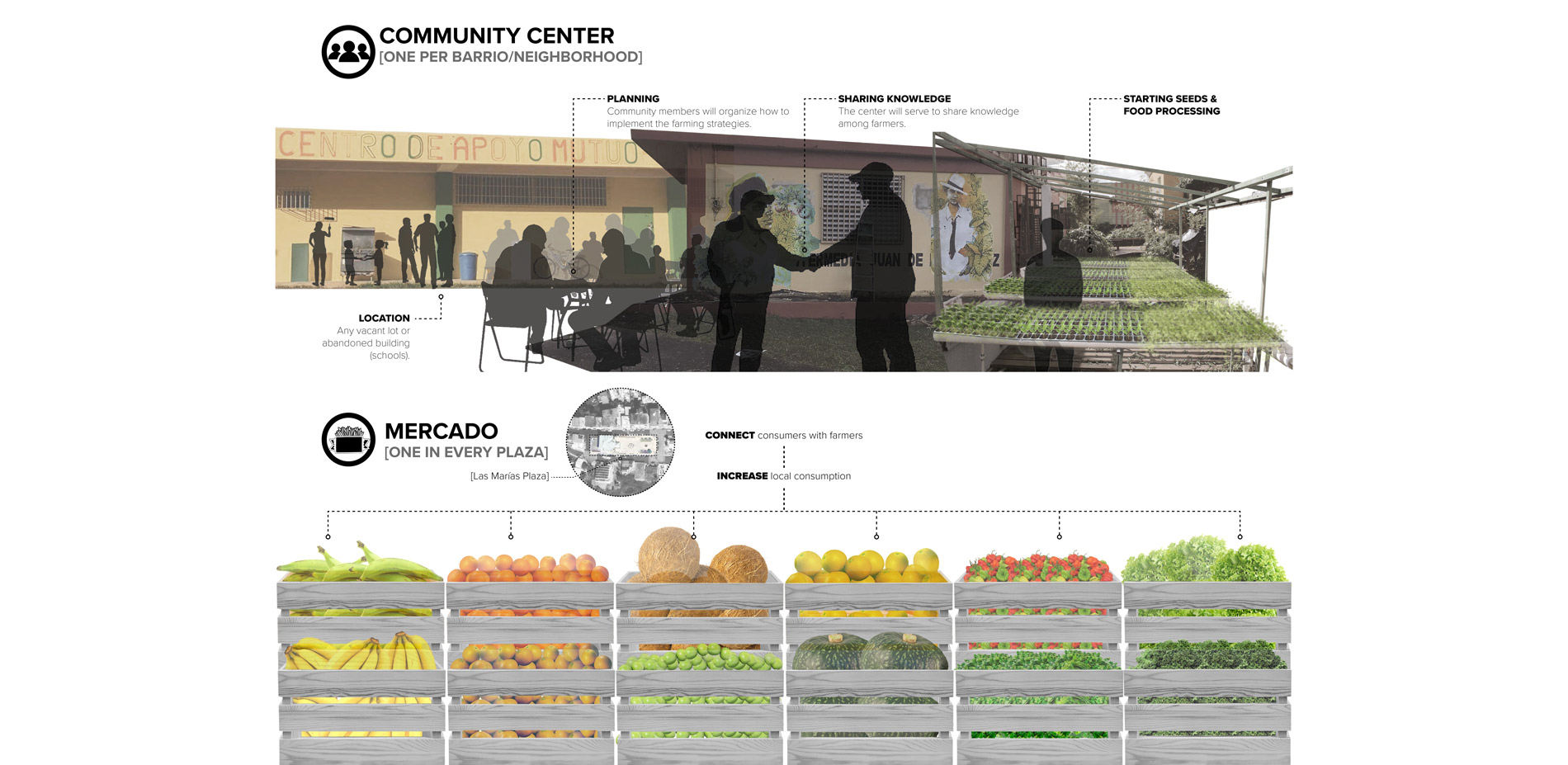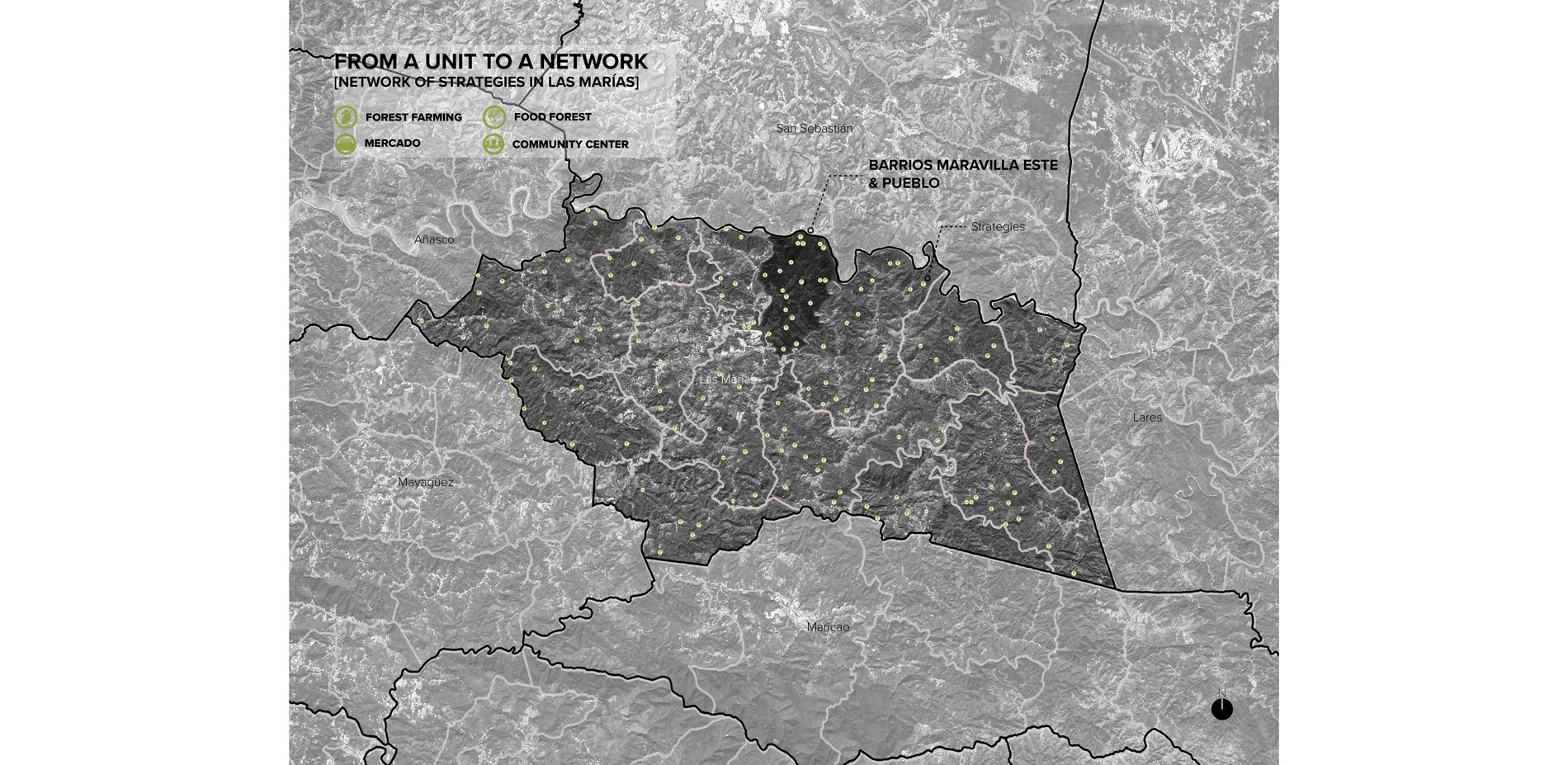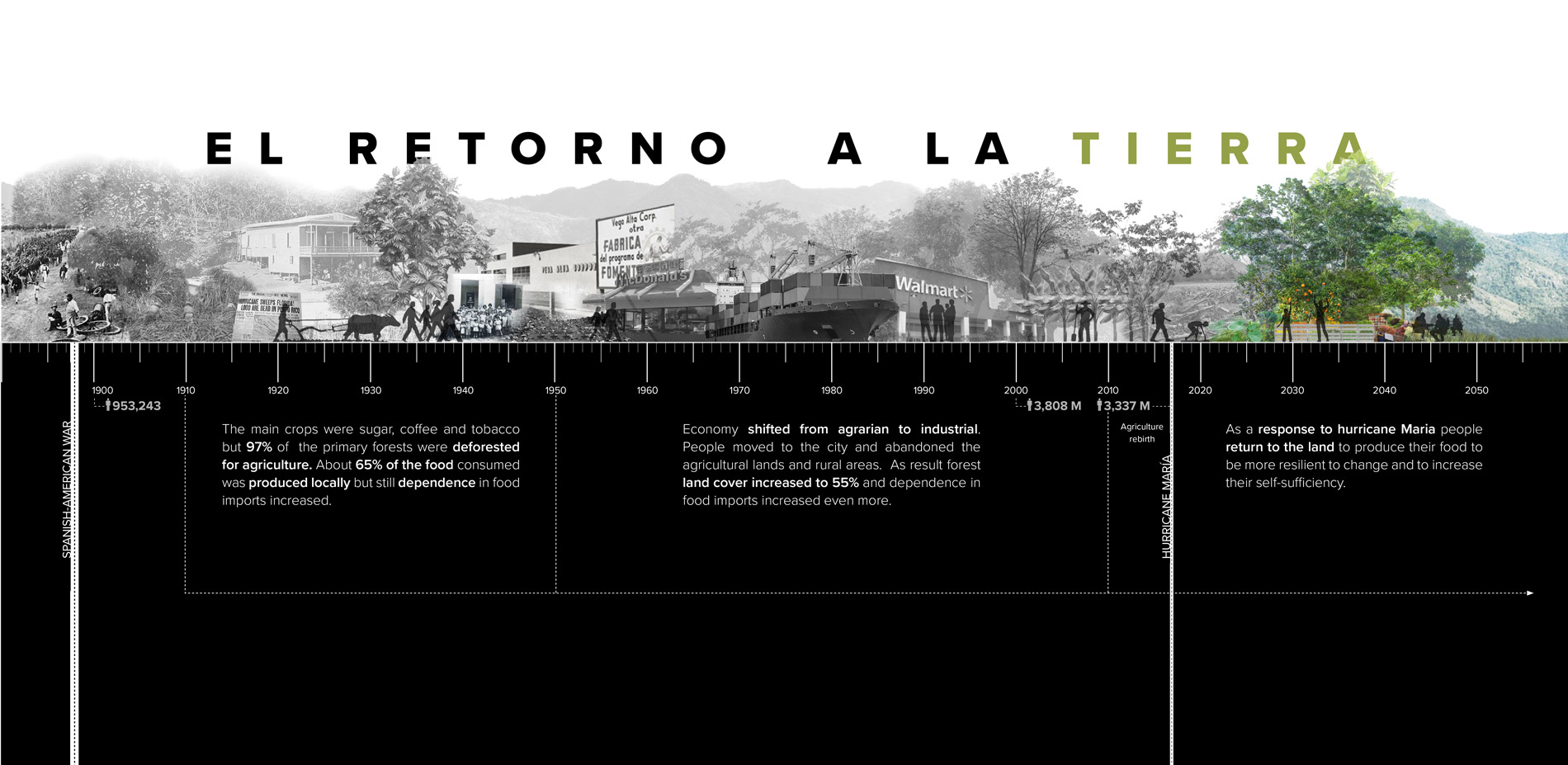El Retorno a la Tierra/Going Back To the Land
AWARD OF EXCELLENCE
Analysis and Planning
Las Marías, Puerto Rico | Nicole Rivera-Ramos, Student ASLA | Faculty Advisors: Matthew R. Potteiger, ASLA; Martin Hogue, ASLA
State University of New York, College of Environmental Science and Forestry (SUNY ESF)
Boldly attacks a timely issue of broad relevance.
- 2018 Awards Jury
PROJECT CREDITS
- Nicole Rivera
- Centro de Apoyo Mutuo
Additional Photo Credits
- Nicole Rivera
- Centro de Apoyo Mutuo
PROJECT STATEMENT
Puerto Rico imports eighty-five percent of its food and the agricultural industry was decimated by hurricane Maria. "El Retorno a la tierra" empowers communities to produce their own food and be self-sufficient. This project presents strategies that could be implemented within the landscape in a barrio for the community to produce their own food. It uses the basic unit of the barrio as a model that could be expanded to other areas. It finds opportunities in the current condition of the forests in the aftermath of hurricane Maria and proposes an integration of food crops with the reforestation efforts in the forests edges, pastures and grasslands. In the 1930's Puerto Rico had an agricultural economy and most of its land was dedicated to agriculture, but this "Retorno a la tierra" is different because it focuses on the diversity and ecological basis of subsistence agriculture, rather than export agriculture that was primary dominated by monoculture. This proposal establishes a new community-based agroecology that creates the possibilities for bringing people back to the land.
PROJECT NARRATIVE
Puerto Rico has a history of agriculture based on commodity crop exports and its prime farmland has been exploited. The lack of diversified agriculture has created a dependence on imports: Eighty-five percent of the food for Puerto Rico's consumption is imported. Recently, an agricultural rebirth was happening with people returning to the land to produce their own food. Then, this past year, hurricanes Irma and Maria impacted Puerto Rico. Category four Hurricane Maria created havoc and also revealed the fundamental weaknesses of the commodity-based system The Department of Agriculture estimated that eighty percent of the crop value was lost. Also, many suffered the consequences of the Island's reliance on food imports, making evident the need for greater agricultural self-sufficiency.
Producing our own food gives us power and freedom. "El retorno a la tierra" explores opportunities to implement sustainable agricultural practices at the community level to increase food self-sufficiency in the rural areas of Puerto Rico. The communities in these areas suffered the most serious impacts from the hurricanes, but they also have the potential to initiate new agroecological systems. The municipality of Las Marias in the western region of the Island was used as the case study. Las Marías is a small municipality that its known for its sweet oranges and coffee. It is located at the foothills of the Central Cordillera of Puerto Rico and has a population of 9,881 people.
The major goal was that the proposed strategies will establish a model for a network that could be expanded throughout the region. Analysis of ecological and social aspects of the area were made in order to propose strategies that respond to the natural and social factors of the area along with deep research of the agriculture history, current situation, principal food products, food imports and the hurricanes impact on the Island. This research provided fundamental understandings that helped guide a trip to Puerto Rico from December through January of 2017. During the trip, Plenitud Farm, a sustainable farm in the municipality of Las Marias, was studied as a precedent. Farms like this one, along with other community organizations, became immediate relief centers for the people in the communities because of their sustainable practices, such as water collection, solar energy and permaculture.
Before the hurricanes, the Island was facing many challenges. The hurricanes made the difficult situation the Island was going through more evident. The impact on the agricultural sector revealed the need for a new model that can be more resilient, ecological, and social sensitive. There is an opportunity to reconnect the people with the land in order for them to produce their own food and be more resilient and self-sufficient. Based on this, the goals for this project were: Increase food self-sufficiency by developing a network of strategies for subsistence agriculture at the community level that can also be expanded at a larger scale. The second goal was to provide ecological and cultural resiliency by providing a design that will respond to the post hurricane situation on the island by adapting and seeking opportunities for growing in the short and long term.
The proposal focuses on the basic unit of the municipality of Las Marias, the neighborhoods or barrios. Many of these barrios are delimited by water streams.Two barrios, Maravilla Este and Las Marias Pueblo, were selected for the proposal out of sixteen other barrios, based on their access and centrality in the municipality. Maravilla Este has a population of 748 people and is about 1.93 square miles. The main crops produced in this neighborhood are plantains, bananas, oranges, lemons and grapefruit. This neighborhood is important because the Puerto Rico Highway 119 crosses through it bringing the majority of visitors. The Pueblo neighborhood is the urban center of the municipality. It has a population of 262 people and its about 0.06 square miles in size. The arrangement of this urban center is a Spanish settlement with a plaza in the center, the church to one side, and the city hall to the other. It is one of the smallest urban centers in Puerto Rico. These two barrios were the primary units of study. Two parameters were used to identify opportunities for proposing strategies: the USDA inventory of Prime Farmland and Land Use Cover. The proposal utilizes these inventories to propose new strategies. The strategies are specific to the prime farmland areas and the particular land cover for those areas. The strategies proposed were forest farming and forest gardening. Two additional strategies were proposed that are not related to the landscape conditions but respond to the social conditions. These are a community center and Mercado (Farmers Market).
"El retorno a la tierra" is about bringing people back to the land to produce their own food and be self-sufficient. This project presents strategies that could be implemented within the landscape in a barrio for the community to produce their own food. It finds opportunities in the current condition of the forests in the aftermath of hurricane Maria and proposes an integration of food crops with the reforestation efforts in the forests edges, pastures and grasslands. Since these forests are beginning their ecological succession stage recovering from the hurricane, there are things that are uncertain and the strategies should be flexible to adapt to any changes in the forests. Back in the 1930's Puerto Rico had an agricultural economy and most of its land was dedicated to agriculture but this "Retorno a la tierrra" after hurricane Maria is different because it is about people focusing on the diversity and ecological basis of subsistence agriculture, rather than export agriculture that was primary dominated by monoculture.
The proposal also addresses the social relationships with agricultural. The strategies seek to empower the community by directly engaging in small scale agricultural production and marketing. Since the strategies are at the basic unit of the neighborhood they can be adapted to fit the necessities of other community. Landownership is a big question and its important to mention that there needs to be more research done on the possible sites available for the community to implement the strategies within the areas where these projects are proposed. The Planning Board of Puerto Rico will be a helpful agency to contact for this. As there are still some aspects that will continue to be researched, this proposal gives a base to start a discussion of the possibilities for bringing people back to the land.
This is the moment to implement new things and change the agricultural model of the Island. This project proposes it from the community level as simple as farming the forests edges, establishing food forests in the grasslands or pastures and empowering communities. This is the only way we can move towards more sustainable food systems, working with the communities, empowering and educating them to make more sustainable choices and landscape architecture plays an important role in achieving this.
